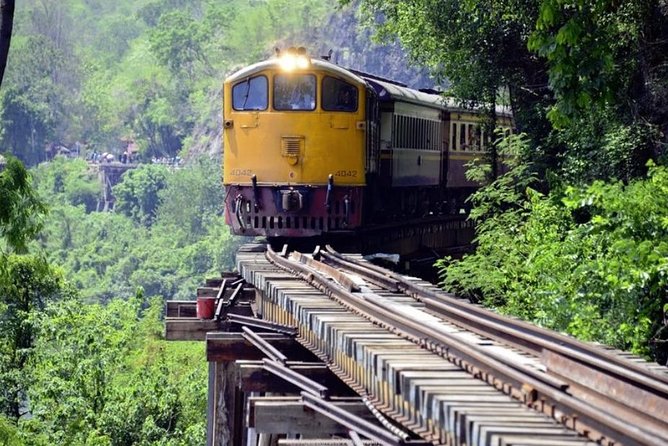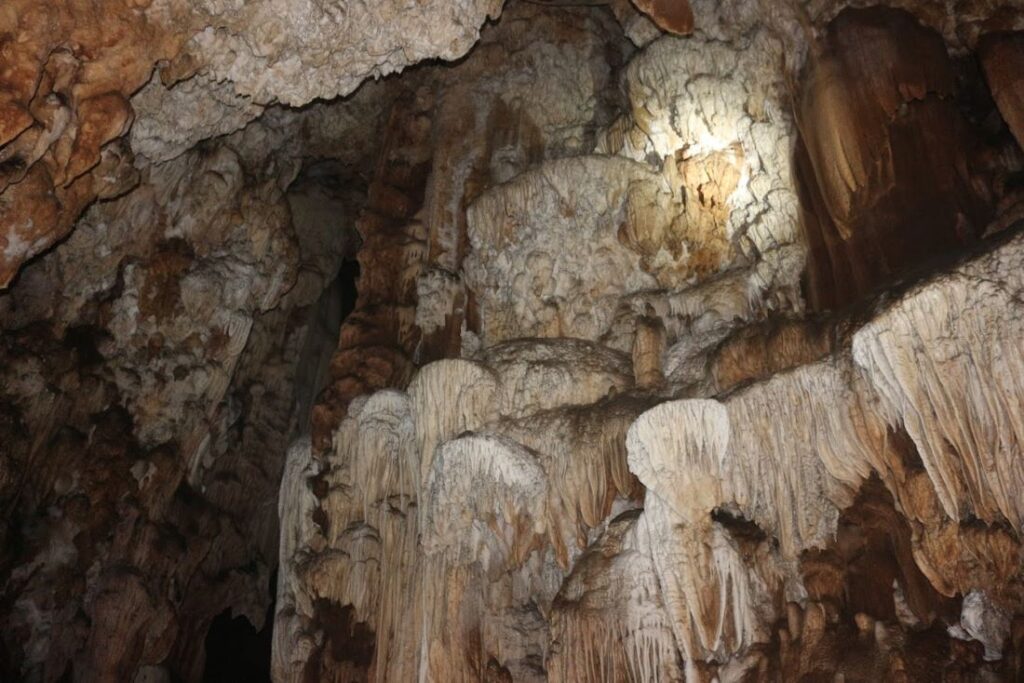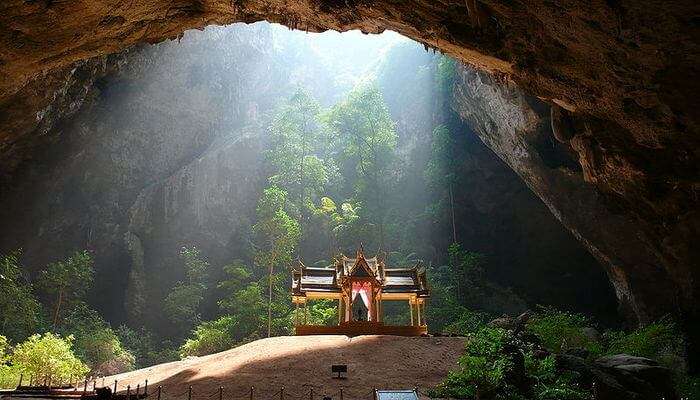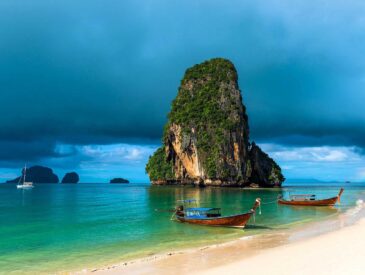(Updated Nov 2024) If you are visiting or live in Bangkok Thailand, some of the most amazing nature and wildlife parks and sanctuaries are within a short drive away. In fact, the first national park, Khao Yai, is just a couples hours away. There are 5 main National Parks close to Bangkok, as well as other top areas to experience nature and wildlife.
Bangkok Thailand is often used by travelers as a jumping off point for travel to other parts of Thailand, such as Chiang Mai in the north, or the many fantastic islands and beaches to the south. As a result, many people do not have too much time to venture out beyond the city. This article is meant to help you figure out where you can and should go if you have time to explore the region.
The biggest challenge for most tourist is probably figuring out how to get to whichever area they want to visit for nature and wildlife. There are many options, from driving yourself, taking a tour or eco tour, public transportation, and more. We will point out the ‘how to get there’ below.

Resources
Agoda is the best place to book cheap affordable hotels in Thailand, especially near national parks. They also book flights as well.
Expedia is my favorite place to book flights, hotels, cars, and more. Their group includes Hotels.com and Vrbo for vacation rentals.
Viator is the top choice for activities. Book everything from a temple tour to scuba diving, jungle trekking to cooking classes.
12Go is the top transportation source for Asia. From busses to trains to regional flights.
Air Asia is the top regional discount airlines for Thailand and all Southeast Asia. Book from Chiang Mai to just about everywhere.
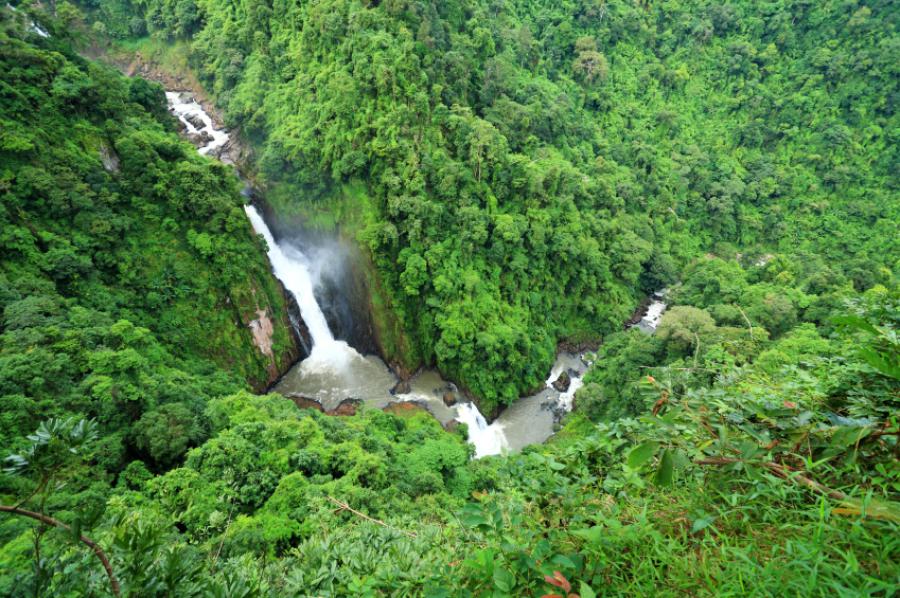
Contents:
- Khao Yai National Park
- Sai Yok National Park
- Erawan National Park
- Kui Buri National Park
- Khao Sam Roi Yot National Park
- Northern Thailand Park Options
Khao Yai National Park
Khao Yai National Park is present in Dong Phayayen-Khao Yai Forest Complex in Thailand. It is spread across 2,168-km² area with rainforest, Khao Rom (1000-ft AMSL) and rolling hills. This is a great park to explore by cycling, forest hiking, and jeep safari.
Full of nature and wildlife, it is easy to spot many birds, animals, and reptiles on your safari. It is advisable to go for hiking and trekking in the permitted places only. A week-long adventure is necessary to see all of the Sai Yok National Park attractions.

Established in 1962 as Thailand’s first national park, it is the third largest national park in Thailand. Making it one of the best places for nature and wildlife. It is situated mainly in Nakhon Ratchasima Province, Khao Yai extends into Prachinburi, Saraburi and Nakhon Nayok provinces. The main checkpoint of the park is 180 km from Bangkok.

The rainy season is from May to October with high humidity and with the most rainfall in September. The rest of the year is quite dry. November to February are the winter months with cooler weather and average temperatures of 22 °C during the day and down to 9-10 °C during the night.
What You Can Do
The main activities in the park are hiking, nature and wildlife viewing, visiting waterfalls & viewpoints and camping. The visitor center area is a good spot to get some quick information and start a day trip.

There are two main campsites in the park; Lam Ta Khong Campsite and Pha Kluai Mai Campsite. Tents and sleeping gear can be rented from each campsite and can’t be booked in advance.
There are seven official trails of which most must be accompanied by either a guide or a ranger (if available). Guides can be arranged via various tour operators (or this website), rangers must be arranged earliest in the morning for availability. The shortest trail is a 800 m long circular trail behind the visitor center, the longest one is the 8 km, an one way trail that starts behind the visitor center and ends at Haew Suwat Waterfall.

Getting There
A single taxi trip from any hotel/airport in Bangkok to a hotel north of Khao Yai costs from 2,200 Baht up. The trip takes around 2h 15 mins to 2h 30 mins in good traffic. It is not possible to enter the park by foot from the checkpoint. The visitor center is around 14 km further in and other popular attractions are much further inside the park.
Viator would be the best option for nature and wildlife, for those who don’t have their own transportation.
Sai Yok National Park
This National Park is located in the protected area of the Western Forest Complex in Thailand, which is near to its capital Bangkok. It is spread across 500-sq km with Tenasserim Hills (4,354-ft AMSL), and River Kwai flows through this park. The exotic Sai Yok Yai Lek waterfall is present inside this park. It is the best place to see caves, mountains, rivers, and forests in one place.
A popular national park for local and foreign tourists, known for its waterfalls, caves, historical sites and raft houses along its main river Khwae Noi. The park covers 958 km² in Sai Yok District of Kanchanaburi Province, the entrance is about 100 km northwest of Kanchanaburi City.
You can find the WWII camping sites and an old railway bridge too. A day trip is enough to see the Sai Yok National Park attractions. It is a good place to explore nature and wildlife for bird and animal lovers.
However, most of the interesting animals hold to more remote areas deeper inside the park along the border to Myanmar. Such as leopards, dholes, Asiatic wild dog, Asian elephants, Indochinese serows, white-handed gibbons. A rare species of bat called Kitti’s hog-nosed bat (Craseonycteris thonglongyai) can be found in a limestone cave on a convenient walking distance from the visitor centre in Sai Yok.
The rainy season is May to October/November with most rainfall around September to October. Rest of the year is quite dry with cooler weather around November to January.
What You Can Do
Kwae Noi is a tributary river to the River Kwai, the main river that runs through the national park on the eastern end of the park. There are several raft houses along the river with good view over the forest. These raft houses are one of the most popular attractions in Kanchanaburi Province. It is possible to hire a long-tail boat for around 400-500 Baht for a half hour trip along the river.
Sai Yok National Park has many caves, only in immediate adjacent of the visitor center there are 4 smaller caves. Remember to have a flash-light with you to visit the caves.
Lawa Cave is one of the more impressive caves in the national park, 500 meters deep with small entrance but with huge chambers containing large stalactites and stalagmites. This cave is on the west side of the river, easily accessible from a nearby raft house or by long-tail boats from other raft houses along the river. To get there by car, use a bridge nearby rail station 20 km south and follow the signs.
Getting There
The main visitor center of the park is about 100 km northwest from Kanchanaburi, 19 km north of Hellfire Pass and 3 km from Highway 323 next to the Kwae Noi River.
Sai Yok National Park is one of the few parks in the country that can relatively easily be reached by public transportation, but not all the way to the park visitor center area. Buses stop by at the highway, the last 3 kilometers into the park can be done by motorcycle taxis.
Viator would be the best option for those who don’t have their own transportation.
Erawan National Park
Erawan National Park, which is known for its waterfalls apart from its flora, fauna, nature and wildlife. Located in West Thailand in the Tenasserim Hills range of Kanchanaburi Province, Erawan National Park is home to one of the most popular falls in the country. Founded in 1975 as Thailand’s 12th National Park, it covers an area of 550 km².
The major attraction of the park is the 7-tiered Erawan Falls with emerald green ponds. It is a popular place to take a dip in its cascades. These are exotic places to take postcard size photos with waterfalls and evergreen rainforest as a backdrop. You can also visit its breathtaking limestone caves.
What You Can Do
Due to the limited number of trails, nature and wildlife watching possibilities in Erawan National Park are very limited. Only relatively common species elsewhere in the country can be found in the park, not much of unique habitats.
There is a big camping ground just a few hundred meters from the visitor center & parking area of the park. Tents can be rented from 150 Baht a day for 2 people and 250 a day for 3 people.
Located 12 km north west from the visitor center of the Erawan Falls, Phra That Cave is 544 meters long, the entrance is 15 meters wide and 8-10 meter high. The first chamber is impressively huge, around 40 meters tall and 90 x 50 meters wide. The cave consists of both stalactites and stalagmites, inhabited by bats further in.
There are many restaurants and cafes along the spacious car park of the park. Good to check the price before ordering as some restaurants charge too much for some basic food. Few kilometers north from the visitor center there is a market-a-like place where it is possible to order cheaper food.
Getting There
The park is easily accessible by public buses from Kanchanaburi. Once in the park, the first tier of the falls is a few hundred meters from the visitor center. The park is generally quite busy every day and very busy during the week-end and public holidays. During the annual Songkran Festival 13-15th April the waterfall tiers turns into a celebration place with water fighting.
Viator would be the best option for those who don’t have their own transportation.
Kui Buri National Park
Kui Buri National Park is nestled in and around Tenasserim Hills of Thailand. This park is famous for its sandalwood trees. They are used to cremate royal families of Thailand. They cut only those trees, which are more than 100-years old. This forest cover has more than 2-Lakh sandalwood trees.
Renowned as the premier spot for wild elephant watching in Thailand, Kui Buri National Park offers a good chance of sighting these magnificent creatures in its dedicated wildlife viewing area.
Apart from forest and mountain, this is the only place to see wild elephants in its natural state. Known to be the best wild elephant watching spot in Thailand, it is almost 99% sure the visitors will see wild elephants any given day of the year in Kui Buri National Park’s wildlife watching area. It is advisable to hire a local guide and see wild animals present in Kui Buri National Park.
Kui Buri has a rich fauna of birds with over 260 species currently reported from the park.
Getting There
It is not possible to enter the wildlife watching area beyond the visitor center with your own car. A safari pickup with a guide must be arranged from the visitor center. There is not much wildlife activity in the visitor center vicinity of the wildlife watching area if you are hoping to see elephants or other animals without a safari arrangement into the park.
There is only one general nature and wildlife watching area in Kui Buri, it is at Huai Luek Ranger Station, about 16 km north from the headquarters. There are no public transportation options to get there, private arrangements needed. It is possible to get there with any car or motorcycle. When getting there from Hua Hin or Pran Buri end, the road is pretty good all the way to the visitor center.
Viator would be the best option for those who want to go on a private tour.
Khao Sam Roi Yot National Park

Khao Sam Roi Yot National Park is located on the coast of Prachuap Khiri Khan Province right south of Hua Hin. It is the first marine national park of Thailand. It is perfect to explore a different type of nature and wildlife than some of the other parks on this list.
The main attractions of the national park are Phraya Nakhon Cave with its iconic royal pavilion and huge chamber, Kaeo Cave and Thung Sam Roi Yot Freshwater Marsh. The park is also a nice destination for its rich nature and wildlife in freshwater marsh and mangrove forests, beautiful beaches, limestone islands, trails and viewpoints. It is easily accessible, only 60 km south from Hua Hin and nearly 3 hours from Bangkok.
Khao Sam Roi Yot means “The mountain with three hundred peaks” and refers to a series of limestone hills along the Gulf of Thailand with the highest one at 605 meters asl. The northwest corner of the mountain range is called Thung Sam Roi Yot and is mainly freshwater marsh covering nearly 37% of the national park which makes it the largest wetlands area in Thailand.
Birding is a popular activity, as there are around 355 bird species recorded from the park, half of them migratory birds. It is one of the best places in Thailand to see waterbirds on the flight path between Asia and Australia around January/February.
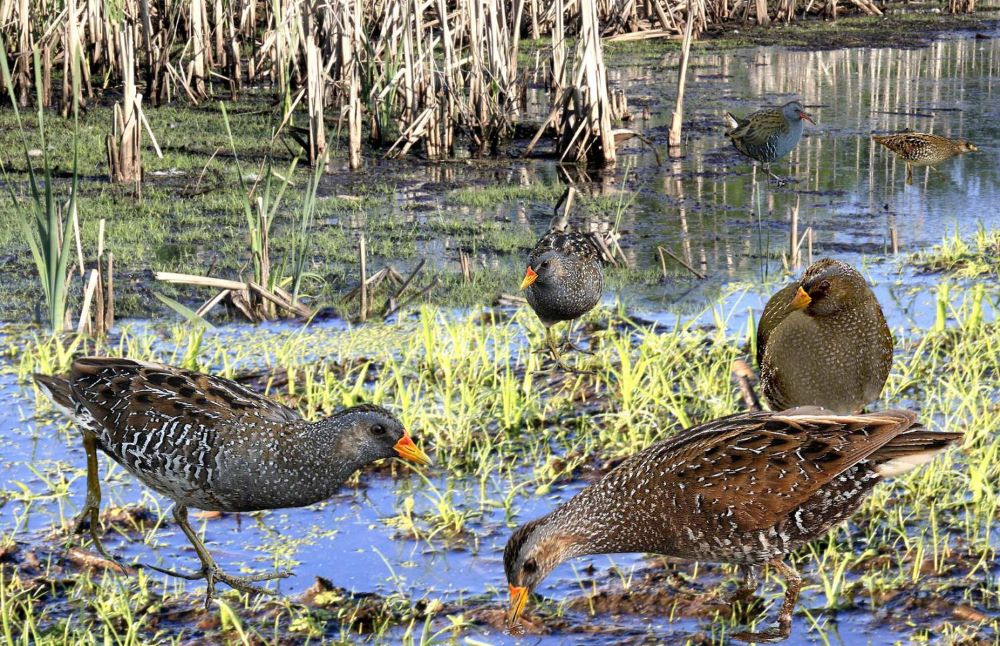
Getting There
It is not possible to get to the park with public transportation options. Private transportation is needed, either by own car/bike or with taxi arrangements. And in the park transportation is needed, as there is not a lot of shade, and long distances between places.
It is possible to arrange a day trip with a taxi from Hua Hin to Khao Sam Roi Yot for about 2,200 Baht.
Viator would be the best option for nature and wildlife, for those who don’t have their own transportation.
Northern Thailand Park Options
In Northern Thailand, there are many more options for nature and wildlife in these parks worth visiting.
Known for being the highest peak in Thailand. With spectacular waterfalls, great hiking, the Two Chedis, and lots of nature and wildlife. This is my favorite park!
Famous for Doi Suthep Temple. But also offers lots of hiking, waterfalls, camping, and Wat Phra Lat.
Famous for Pha Chor, or ‘little grand canyon’.







